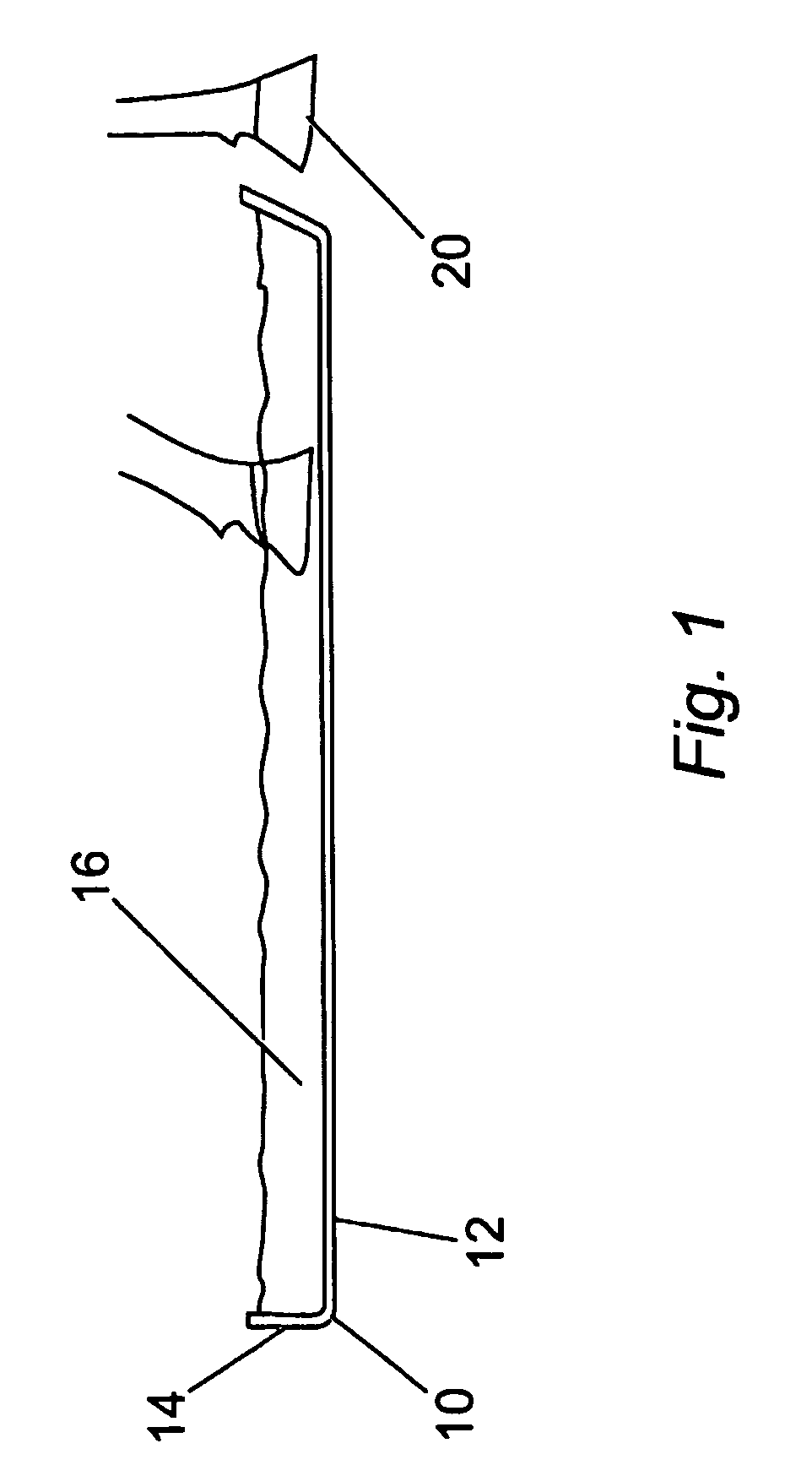Composition for the treatment of diseases which affect animals' hooves
a technology for hooves and diseases, applied in the field of composition, can solve the problems of difficult and inconvenient keeping animals in a footbath for such a long time, high cost of antibiotics, and often recurring infections of horses cured of lameness, and achieve the effect of easy mixing of compositions
- Summary
- Abstract
- Description
- Claims
- Application Information
AI Technical Summary
Benefits of technology
Problems solved by technology
Method used
Image
Examples
example 2
[0059]An alternative variant of the composition includes a proportion of oil. Such a composition was prepared comprising 4 kg of SPLF, 6.65 kg of sodium chloride, 6.65 kg of copper sulphate, 0.625 kg citric acid, 6.875 kg zinc sulphate and 0.250 kg of liquid paraffin oil. These ingredients were again mixed together using a power mixer. To obtain the colloid, about 175–200 litres of pressurised water was injected into the mixture. A smooth colloid of even consistency was formed.
example 3
Comparison of Composition with and without Colloid Former
[0060]The following protocol was performed to demonstrate the efficacy of the colloid former in increasing the amount of active ingredient adhered to hooves.
[0061]Two footbaths were prepared containing compositions of the following specifications:
Footbath 1 (with Colloid Former):
[0062]3.75 kg SPLF (sepiolite);[0063]6.875 kg sodium chloride;[0064]6.875 kg copper sulphate;[0065]0.625 kg citric acid; and[0066]6.875 kg zinc sulphate,[0067]in 175 litres of water.
Footbath 2 (without Colloid Former):[0068]6.875 kg sodium chloride;[0069]6.875 kg copper sulphate;[0070]0.625 kg citric acid; and[0071]6.875 kg zinc sulphate,[0072]in 175 litres of water.
[0073]Samples of hooves from cattle were taken and analysed to determine their zinc content.
[0074]The cattle were then split into two groups and one group passed through each footbath. Following this they were then held in a concrete floored holding pen for approximately 10 minutes to allow...
PUM
| Property | Measurement | Unit |
|---|---|---|
| weight | aaaaa | aaaaa |
| time | aaaaa | aaaaa |
| length of time | aaaaa | aaaaa |
Abstract
Description
Claims
Application Information
 Login to View More
Login to View More - R&D
- Intellectual Property
- Life Sciences
- Materials
- Tech Scout
- Unparalleled Data Quality
- Higher Quality Content
- 60% Fewer Hallucinations
Browse by: Latest US Patents, China's latest patents, Technical Efficacy Thesaurus, Application Domain, Technology Topic, Popular Technical Reports.
© 2025 PatSnap. All rights reserved.Legal|Privacy policy|Modern Slavery Act Transparency Statement|Sitemap|About US| Contact US: help@patsnap.com

